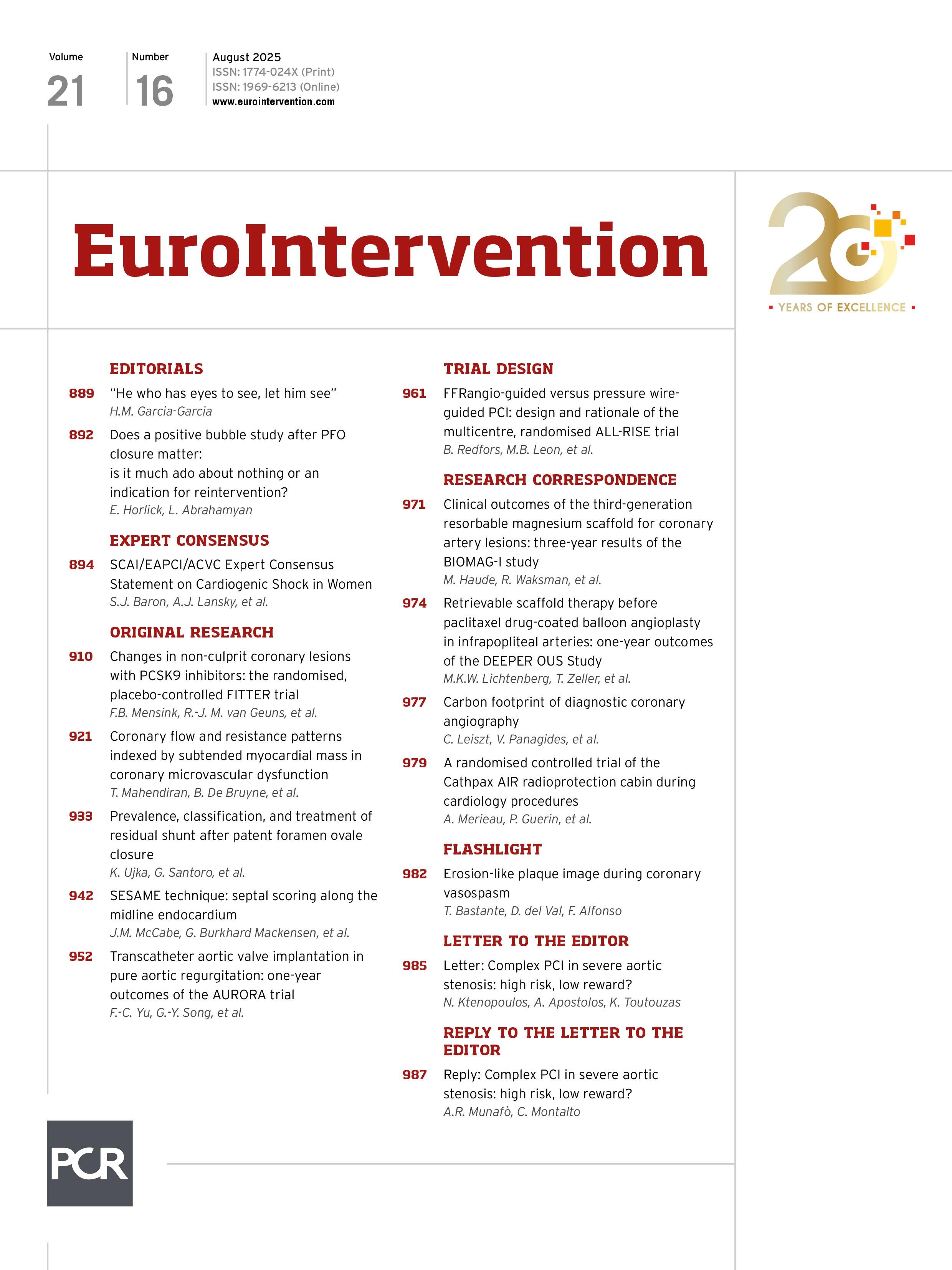The publication of major randomised controlled trials (RCTs) about patent foramen ovale (PFO) provided much needed evidence that made a longstanding intervention a mainstream cryptogenic stroke prevention strategy. In our real-world study of 479 patients with the Amplatzer PFO Occluder (Abbott), at the median follow-up of 9.3 years, we noted a 1.5% risk of stroke (0.16/100 person-years) and 4% risk of transient ischaemic attack (TIA; 0.44/100 person-years)1.
Few things are as disheartening to patients and physicians alike than a positive bubble study after PFO closure. Wasn’t this the reason we pursued device closure at the outset? It is a source of anxiety and consternation that prompts the question “what do we do now?”
We do not have an ideal methodology to evaluate the risk of stroke recurrence after PFO closure. We default to the use of saline contrast echocardiography, which typically has 16-38 μm microbubbles, larger than the 7-8 μm diameter of pulmonary capillaries. These bubbles may shrink in size when dissolved in a solution because of the effects of diffusion and surface tension. Smaller bubbles may traverse the lung circulation,...
Sign up for free!
Join us for free and access thousands of articles from EuroIntervention, as well as presentations, videos, cases from PCRonline.com

